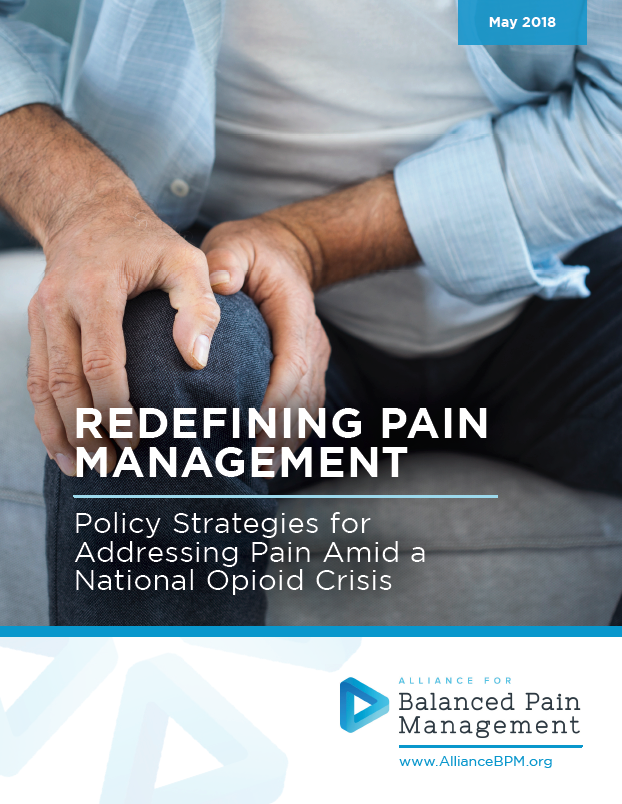How Policymakers Can Redefine Pain Management
May 9, 2018
More than 42,000 Americans died from an opioid overdose in 2016. Meanwhile, millions of other Americans suffer from chronic pain. The situation poses a difficult question for policymakers: How do we meet the needs of pain patients without contributing to the national opioid crisis?
A newly released white paper from the Alliance for Balanced Pain Management offers some suggestions.
In “Redefining Pain Management,” the group outlines five policy strategies for striking a balanced approach.
- Improve access to abuse-deterrent technology.
“For many patients, opioids are still an effective and appropriate pain treatment,” the paper notes. Opting for abuse-deterrent formulations where appropriate can minimize the risk for household, family and community alike. Abuse-deterrent formulations, which have been shown to reduce diversion by nearly 91 percent, are designed to resist crushing or dissolving for recreational use.
- Increase availability of balanced pain management.
Balanced pain management can treat pain and decrease the need for opioids by offering more options for physicians and patients. The approach includes treating chronic pain with integrated care, which might include physical or occupational therapy, chiropractic care, talk therapy and other approaches. It also includes multimodal analgesia, an approach to acute pain that uses two or more techniques to reduce pain.
“Most of these solutions we had 35 to 40 years ago,” notes Penney Cowan of the American Chronic Pain Association. “Health plans did not reimburse for them, though, so they basically disappeared from patients’ treatment plans.” The American Chronic Pain Association is a member of the Alliance for Balanced Pain Management.
- Enable technology-based solutions.
“Technology-based solutions also play a role in combating opioid abuse and overdose,” the white paper explains. The paper notes that the Food and Drug Administration has approved more than 200 medical devices to help treat pain. These include devices such as intraspinal infusion pumps, which reduce the amount of opioid needed by delivering the medication directly to the spinal cord, and neurostimulation, which disrupts pain signals to the brain.
- Encourage innovation on non-addictive pain treatments.
Public policies can encourage a balanced approach to pain management. The paper points to the Department of Health and Human Services’ Five-Point Opioid Strategy and the 2017 Integrative Pain Care Policy Congress as examples.
- Ensure stronger coverage policies.
The paper notes that health plan design influences which pain management options patients and health care providers have at their disposal. For integrative treatment and technology-based solutions to impact the opioid crisis, the paper explains, they must be accessible.
To learn more, read the Alliance for Balanced Pain Management’s “Redefining Pain Management.”
Tags: Innovation, Integrated Care, PainCategorized in: Blog


